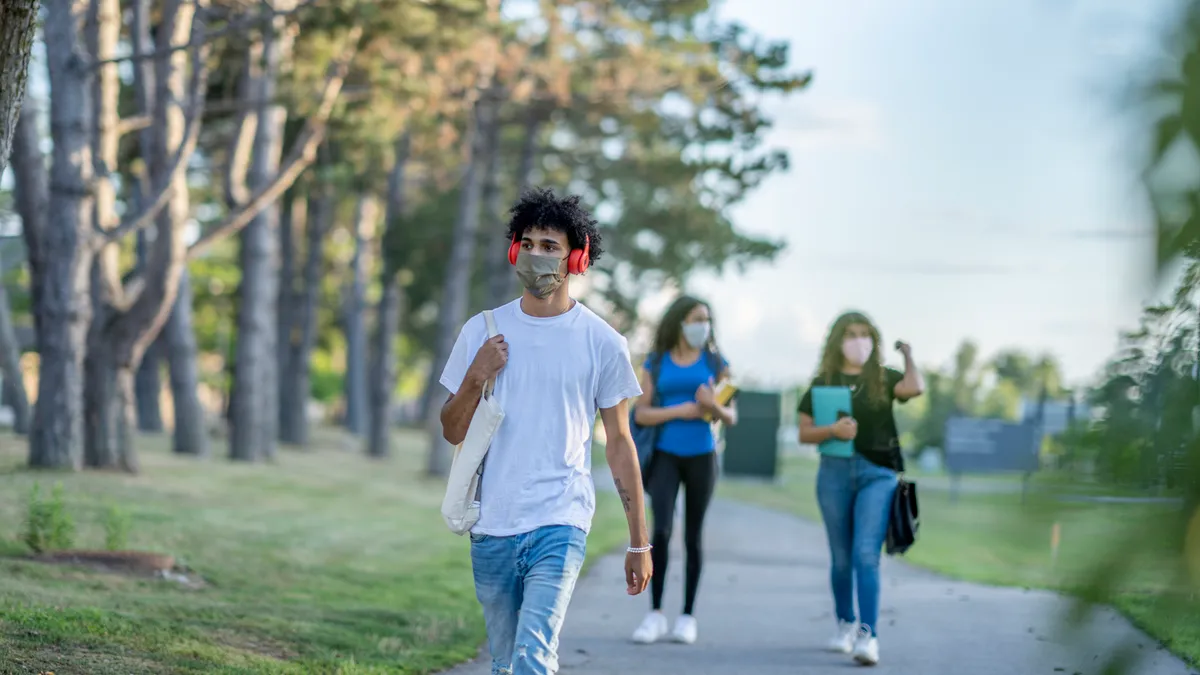Dive Brief:
-
A federal grant program for community colleges developed in response to the Great Recession offers lessons on how these schools can overcome the challenges of offering instruction during the pandemic, according to a new report from New America.
-
Using the Trade Adjustment Assistance Community College and Career Training program, launched in 2010, to form consortia or collaborate often helped schools develop better initiatives than they would have on their own, the authors wrote.
-
They recommend policymakers prioritize consortium-building, while colleges focus on collective problem-solving.
Dive Insight:
The report calls out several uses of the TAACCCT grants that could serve as models for other colleges. A consortium of 11 community colleges and universities in New Mexico, for example, used a grant to create an online course-sharing network. It allowed students across the state to take classes virtually from any of the member institutions.
Community colleges in Missouri, meanwhile, used a TAACCCT grant to grow hybrid programs that allow health students to complete their academic work online and clinical work close to their homes. They also formed a consortium to offer health programs across their sites.
This type of initiative can be particularly helpful in rural areas, where there may be a growing need for health professionals but not enough demand for colleges to launch programs, the authors wrote.
The Kentucky Community and Technical College System used grant funding to expand an existing project. Through its Learn on Demand initiative, students can take online, competency-based education programs developed by seven participating colleges. They also receive success coaching services from a central office.
Course or program-sharing can grow colleges' ability to "meet both student and workforce demand, particularly in rural areas," the authors wrote, though hurdles remain.
To address potential issues, colleges should develop ways to split the revenue from their online collaborations. Colleges participating in Kentucky's Learn on Demand initiative take 90% of the tuition revenue from students enrolled in the programs they administer, while the remaining 10% goes into a fund that is divided equally among the other colleges and central office at the end of the year.
Conflicting program start dates and financial aid policies may also be an issue for colleges working together. Missouri's health consortium meets four times a year to work through administrative challenges and set a budget, the report notes.















